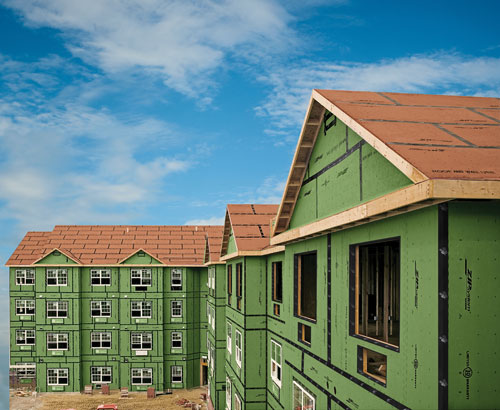High-Performance Wood-Framed Roofs
Learning Objectives:
- Define the parts of wood-framed roofs
- Identify at least three types of roof underlayments
- Explain the proper use of a radiant barrier in a roof system
- Identify the types of construction where wood-framed roofs can be used
Credits:
Wood-framed construction is the predominant method of building homes in the U.S. and has gained steady acceptance in light commercial and industrial buildings. The inherent strength of wood-framing, its cost effectiveness, and energy efficiency have been borne out in hundreds of years of use. Yet today’s high energy prices, changes in building codes, and growing awareness of building performance and environmental sustainability have led to the development of products and practices that strengthen wood framing as a preferred construction method. This article will focus on wood-framed roofs, their basic anatomy, and the best practices that lead to high performance.
Anatomy of a Wood-Framed Roof
Dimensional lumber or engineered wood is typically installed equal distances apart to create the support structure of a wood-framed roof assembly. The framing is sheathed with plywood or oriented-strand board (OSB), then layered with various underlayment materials before the finished roofing materials are attached. A key consideration is the type of roof construction, stick built or truss. Each has its advantages and disadvantages.
 |
|
Photo: Huber Engineered Woods High-performance wood-framed roofs contribute to building durability, comfort, and energy in any climate. |









